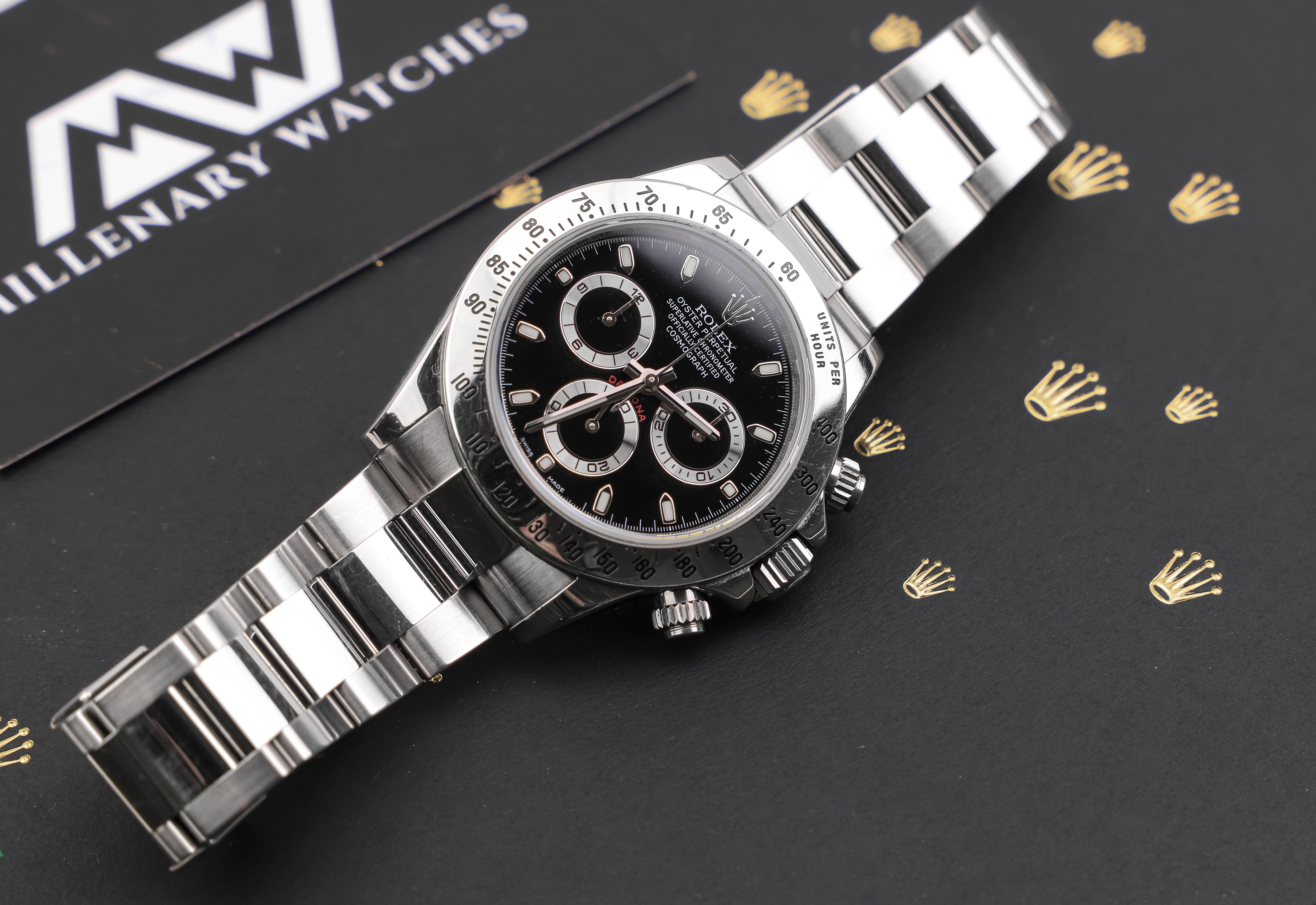
How to use the Rolex Daytona and its functions
The Rolex Daytona Cosmograph is perhaps one of the most well-known sports watches in modern times. The iconic look with three sub-dials and the chronograph pushers is well recognized and is perhaps today one of Rolex’s most popular watches. But what is the original usage of this watch mean to be? And what do the three sub-dials do?
Let us take a look at how to use the Rolex Daytona. In this article, we primarily focus on the Rolex Daytona 116500LN, but overall, we talk about all the Rolex Daytona models, as the functions remain the same, although the dial configurations may be slightly different.

The hour and minute hands
The hour and minute hands are perhaps the most obvious hands on the watch. They are placed in the center of the dial the shorter hand is the hour hand and the longer is the minute hand. These hands are used to tell the time.
The seconds hand
When looking at watches, often the seconds hand is placed in the center of the dial and sweeps, but if you’ve had a Daytona or seen one in real life, you might have noticed that often, what usually is mistaken as the second hand, in the center of the watch not is moving. That’s because the seconds hand on the Rolex Daytona reference 116500 is placed in the 6 o’clock sub-dial. The seconds hand operates just like a ”normal”, and when you set the time it stops. What often is mistaken as the second hand is in fact the chronograph hand.
The Chronograph hand
The chronograph hand is placed in the center of the dial, this hand is controlled by the pushers on the case placed at the 2 and 4 o’clock positions. The 2 o’clock pusher is used to start and stop the chronograph hand, as well as the chronograph mechanism. The button placed at the 4 o’clock position is used to reset the chronograph to 0 again.
The 30-minute register
When you start to activate the chronograph with the pusher placed at 2 o’clock your chronograph hand will first start ticking. When the chronograph hand has rotated a full spin, that will say 60 seconds, if you pay close attention to the sub-dial at the 3 o’clock position you will see that the hand will move 1 step, which represents one minute. The minute register continues like this for 30 minutes straight, and will then start over again. When 30 minutes have passed, the sub-dial at 9 o’clock starts doing its function.
The hour register
The hour register is placed at the 9 o’clock position and indicates the hours that have passed from when you started the chronograph. As the minute register only keeps track of 30 minutes, the hour register will jump one step for every 30 minutes that pass. In order to rotate a full spin, it takes 12 hours. This means that the chronograph function can be used to time up to 12 hours before it appears that everything is reset to 0 again.

What about other Daytona references?
Other Daytona references, such as the Daytona 16528 ”Zenith” work in the same way, but the sub-dials functions are placed at different positions. This is due to the fact that they are powered by different movements.
The seconds hand is placed in the sub-dial at the 9 o’clock position, the minute register at the 3 o’clock positioned sub-dial, and the hour register at the 6 o’clock position. There are also previous models that do have the sub-dials and the function placed at the same spots as the Daytona reference 116500, an example of this is the prior Daytona reference 116520.

Read our previous articles about the different Rolex Daytona movements here!




